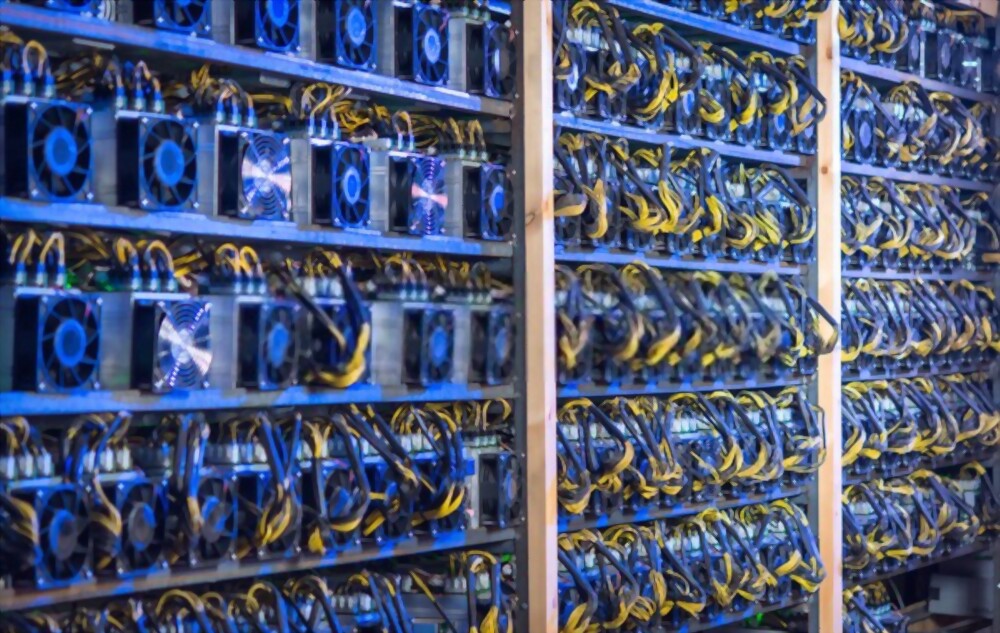Presently, around 18.5 million Bitcoins have been mined. That means there are still about 2.5 million Bitcoins yet to be minded. Importantly, this also means that miners still receive the valuable reward of 6.25 newly minted BTC, as well as transaction fees, whenever a new block on the Bitcoin blockchain is mined.
Although Bitcoin is very valuable, currently, it is worth around $35,000 US, it is very difficult to become a miner at this point in the game. Back in 2009, early adopters mined BTC with personal computers, and so the cost was negligible. But today, to earn a profit from Bitcoin mining is a much more competitive and expensive endeavor.
If you want to get a rough estimate of the profitability of mining Bitcoin, you can use a Bitcoin mining calculator. These calculators consider the cost of energy, necessary hardware, the probability of success, the network difficulty rate, and BTC’s current market value. With a calculator, you get an estimate of the potential earnings from mining Bitcoin today.
Costs of Mining
The majority of Bitcoin is mined in China. That means over 60% of Bitcoins are mined by computers that are run in China. And of that portion, large mining companies mine about 60% of those Bitcoin.
The leading three companies are Riot Blockchain (RIOT), Hive Blockchain (HVBTF), and Marathon Patent Group (MARA).
If you want to be a competitive miner, you need a large amount of capital to invest in high-powered computers Application Specific Integrated Circuit (ASICs) hardware. These are about $5000 US each, and just one will not do the trick. Quality hardware is crucial, as the lower the watts per gigahash (W/Gh), the more efficient the mining is.
Those who want to mine Bitcoin individually must join a mining pool, as starting your own Bitcoin mine is a very expensive prospect.
The actual cost of mining Bitcoin is the electricity needed to operate the high-powered computers. For this reason, most mining is in China, Venezuela, and parts of Eastern Europe; electricity in these locations is relatively inexpensive. An added issue is that the ASICs create a good deal of heat; you will also need a cooling system.
The next challenge is the difficulty rate of Bitcoin. Bitcoin’s code means that it is designed to be mined every 10 minutes. Therefore, if more computers compete to mine Bitcoin, then the difficulty rate increases to maintain the 10-minute delay. The difficulty level of calculating the hash function is 1 in 16 trillion because it uses the cryptographic hash function SHA-256.
Mining Pools
The most profitable way for individuals to mine BTC is to join a mining pool. Mining pools are a collection of cooperative miners who combine hash power and share the profits from block rewards.
With mining pools, each contributor does not get an equal amount of the Bitcoin reward. The profits are given mainly to the pool owner, and then contributors are paid depending on their computing contributions. One benefit of mining pools is that the miner can redirect their hashing power to different mining pools at any time. You are not tied to one mining pool.
There are many mining pools to choose from, most of which are physically mining from China. But anyone in the world can contribute computing power for a share of the profits.
Currently, Antpool is the largest Bitcoin mining pool, as it has a large concentration of the Bitcoin network hash rate. Antpool holds around 15% of the total hash rate of Bitcoin mining pools. The exchange, Binance, has recently started a mining pool which is in Malta.
Is Mining Bitcoin a Good Way to Earn?
Mining is an essential part of Bitcoin’s functionality. Miners not only create newly minted coins but also approve transactions on the network. While mining Bitcoin has the potential to be very profitable, as mentioned, there are many hefty overhead costs to consider.
Given the already existing competition, mining is certainly not the easiest way to invest in BTC. The easiest way to invest is to buy BTC on an exchange with fiat currency or another cryptocurrency.
